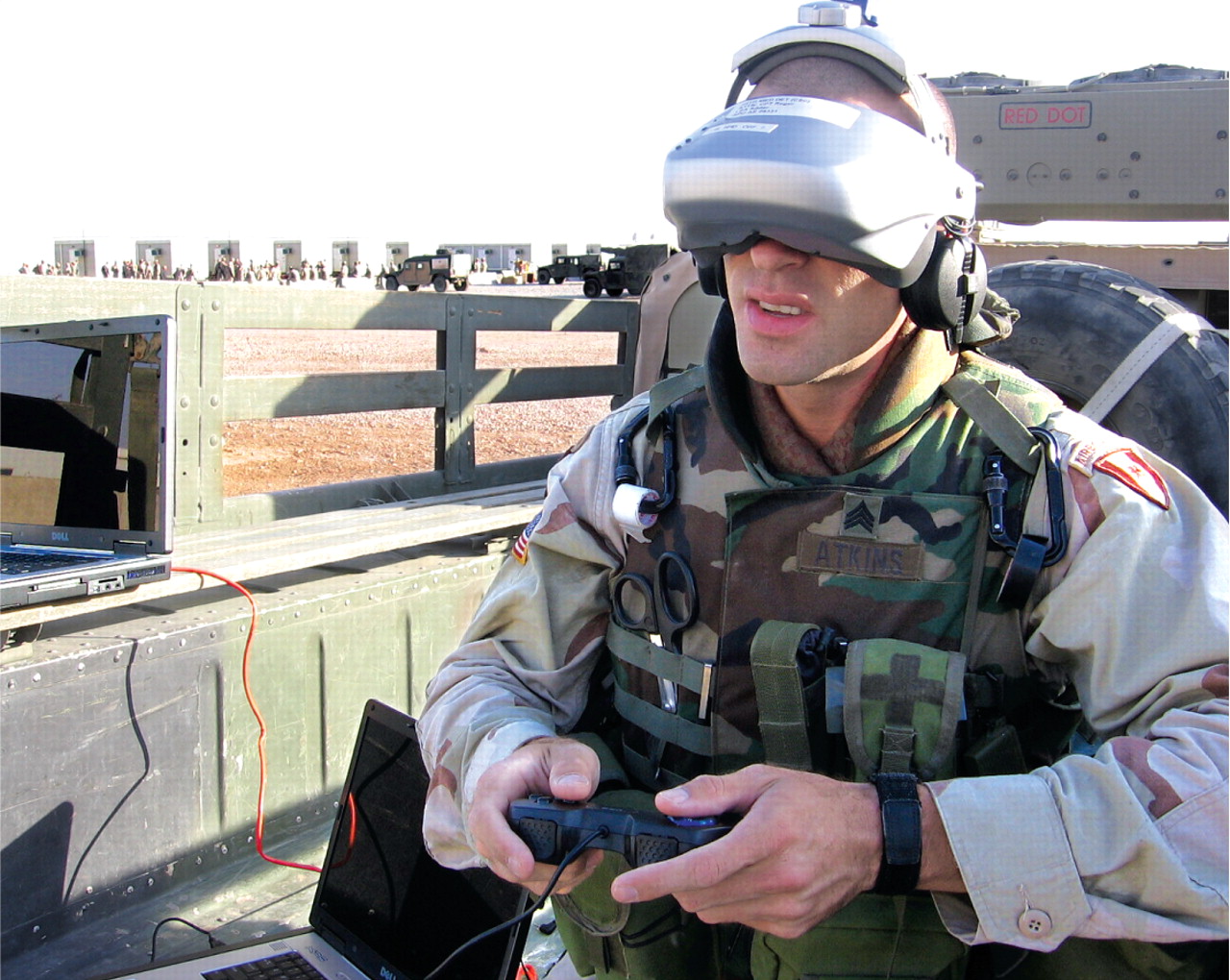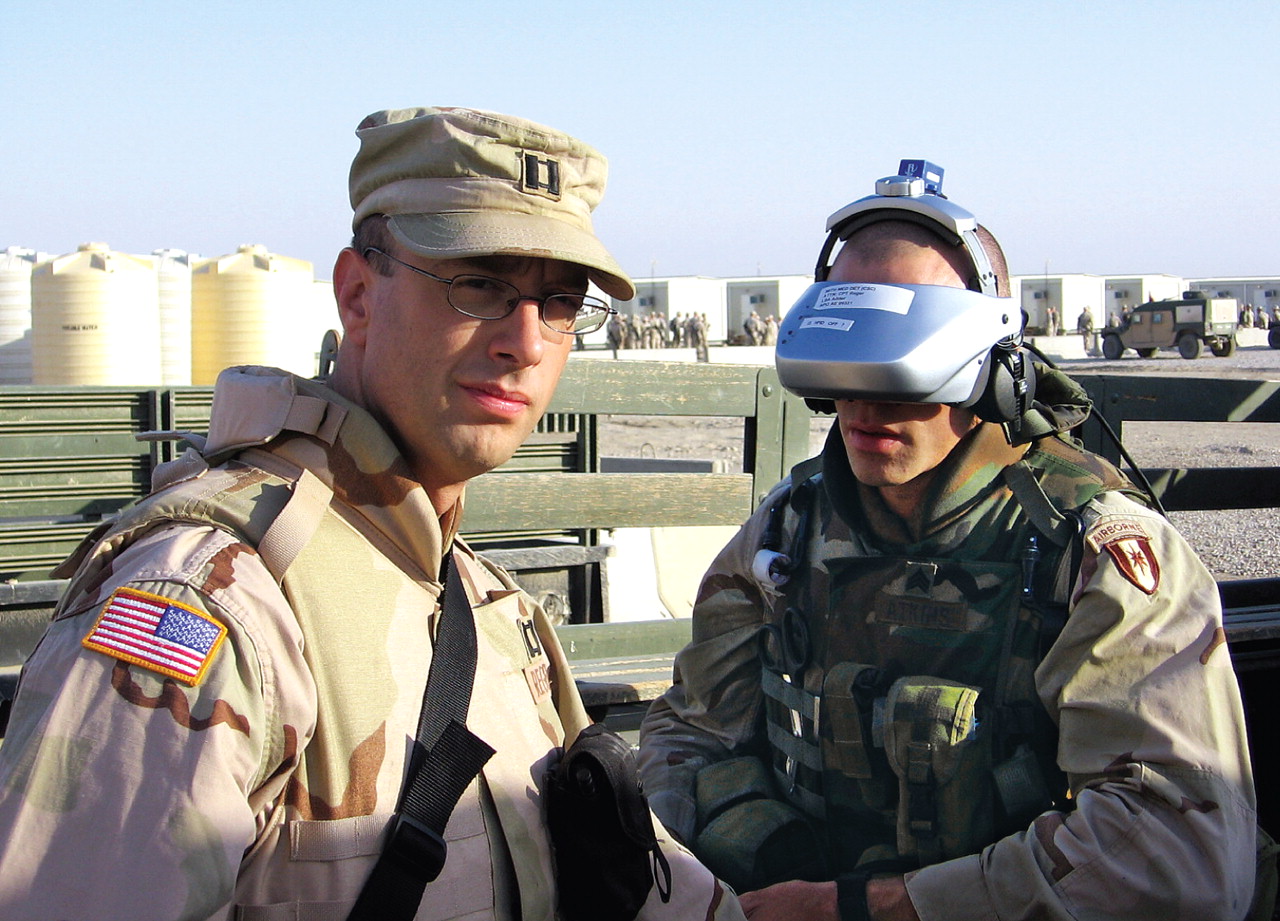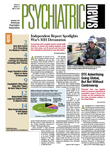The future is a virtual reality. Technology to create artificial environments that can be manipulated—for teaching tomorrow's physicians, assessing patients, and treating some conditions—has moved beyond science fiction and is well on its way to becoming a functional tool in health care and medical education.
Virtual reality (VR) technology has already shown utility for posttraumatic stress syndrome, attention-deficit/hyper-activity disorder (ADHD), and other areas of psychiatry and mental health, said Albert “Skip” Rizzo, Ph.D.
He made his remarks in an address titled “Virtual Reality and Psychiatry: A Brief Review of the Future” at the annual meeting of the American Association of Directors of Psychiatric Residency Training (AADPRT) in March.
“Virtual reality has moved out of the phase of being an expensive toy and into the stage of being a functional technology,” said Rizzo, who is a research scientist and professor at the Institute for Creative Technologies in the Department. of Psychiatry and School of Gerontology at the University of Southern California (USC).
Virtual realities can be displayed on a flat-screen, as with many computer games, or can be viewed through the viewfinder of a head-mounted device (see photo). The scene on the screen or in the viewfinder can be populated with simulated stimuli that can be manipulated for whatever purpose is necessary—whether it's amusement, education, or medical and psychiatric applications.
One of the most promising areas in VR technology is the treatment of patients with PTSD.
Rizzo told Psychiatric News that an early prototype of a VR system for Iraq veterans developed at USC, called Virtual Iraq for Exposure Treatment of PTSD, was designed to simulate traumatic battlefield conditions in Iraq. The system was tested in Iraq by Army Capt. Greg Reger, a clinical psychologist, to “gather user feedback from boots on the ground as to what needed to be in the application to make it more realistic and emotionally evocative,” Rizzo said.
He added that Reger is now using Virtual Iraq for Exposure Treatment of PTSD with patients at Madigan Army Medical Center at Fort Lewis, Wash.
“Soldiers in treatment have also provided good recommendations for improving the application, and this process will continue throughout the lifecycle of this system in order to continuously evolve the features needed to make the system better,” Rizzo said.
A report by JoAnn Difede and colleagues in the November 2007 Journal of Clinical Psychiatry reported successful use of VR Exposure Therapy for PTSD following the September 11, 2001, terrorist attacks.
Rizzo also described preliminary efforts at using VR technology in psychiatry residency training to simulate patient interviewing. The Virtual Patient Project is designed to allow trainees and clinicians to conduct an interview with an “intelligent” virtual character that emulates a person with a DSM-IV disorder.
Rizzo told training directors at the AADPRT meeting that the Virtual Patient Project was based on VR technology used by the Army to train soldiers in negotiation skills needed in dangerous settings. Because the technology is still in its early stages, the virtual “characters” tend to respond slowly and to utter stereotypic responses—characteristics that match in a general way those of a resistant teenager who doesn't want to be in therapy.
So the first simulated patients were resistant male teenagers, and later a young virtual female who had experienced a sexual assault. “The ultimate vision would be to create a virtual character for every DSM diagnosis so you could do training and assessment of novice clinicians' diagnostic skills and their interactions with challenging patients,” Rizzo said.
Also advancing is a VR system for measuring attention performance in children with and without ADHD using a virtual classroom. The virtual scenario consists of a classroom that allows for comprehensive and integrated diagnostic assessment of attention and motor reactivity while in the presence of systematically delivered distractions.
A clinical trial of the system compared eight physician-referred males with ADHD (6 to 12 years of age) with 10 boys who did not have ADHD. Participants in the ADHD group were off medication during the testing period with all testing occurring in the morning prior to normal medication ingestion. Research participants were instructed to perform a “successive discrimination task” in which they viewed a series of letters on the blackboard in the virtual classroom and were required to hit a response button when a letter “X” preceded by an “A” appeared on the board.
Two 10-minute conditions were tested—one without distractions, and one with distractions (classroom noises, a paper airplane flying across the visual field, a car rumbling by the window, and a person walking into the classroom with hall sounds occurring when the door to the room was opened).
The discrimination task using VR technology proved to have“ ecological validity” by distinguishing ADHD patients from controls across a number of measures, and doing so more robustly than standard neuropsychological tests: during both the distraction and nondistraction conditions, children with ADHD showed greater variability in response time and made more errors of omission and commission.
Rizzo said VR also has promising uses for patients with traumatic brain injury, Alzheimer's, schizophrenia, or mental retardation.
“All technologies go through a hype cycle,” Rizzo said at the AADPRT meeting. “In the invention phase you get inflated expectations until people actually try it and find out it's not as good as was thought. Then it can slip into a trough of disillusionment. But if the technology has merit, and people do the hard work and hard science to demonstrate that merit, it may move up the slope of enlightenment toward a plateau of productivity.”
Rizzo said VR was in the trough in the 1990s, but has moved up the slope today. “There are a number of areas where this technology is showing value,” he said. “We are not talking about science fiction anymore.”
“Virtual Reality Exposure Therapy for the Treatment of Posttraumatic Stress Disorder Following September 11, 2001,” is posted at<www.psychiatrist.com/abstracts/abstracts.asp?abstract=200711/110701.htm>.▪



